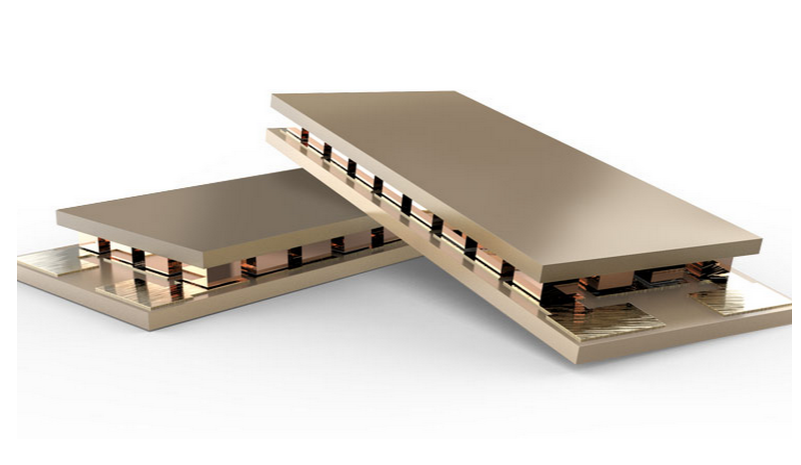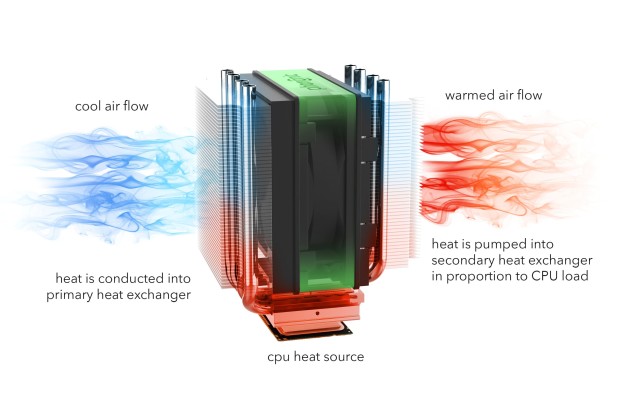Phononic's HEX 1.0 Cooler Leverages Refrigeration Technology To Chill Your CPU
Phononic is preparing a new CPU cooler with an interesting twist: refrigeration technology. The HEX 1.0 is the company's first venture into enthusiast cooling components, but with Phononic's secret weapon, it might just be the first in a new series of high-end coolers.
The company's primary business is in refrigeration. Phononic specializes in thermoelectric technology, which produces a cooling effect on one side of a metal plate when electricity is applied to it. The company intends to use this same technology inside of its CPU coolers. This allows the cooler to offer the thermal performance of a much larger unit.
On the HEX 1.0, the thermoelectric heat pump is powered by a single SATA power cable. Using thermal sensors, the cooler monitors the temperature of the CPU so that it can adjust the heat pump as needed, turning it off when the CPU is relatively cool, or increasing the voltage going to the heat pump to produce stronger cooling effects. Power consumption of the heat pump can range from 0 W to 60 W.
The cooler itself is not particularly large for an air cooler, measuring 4.3 x 3.5 x 3.5 inches (H x W x D). In the center of the cooler sits a dual-ball bearing 80 mm fan, with heatsinks placed in front of it and behind it. Although the fan is capable of producing a relatively high amount of air flow for an 80 mm fan at 67.02 CFM, we wouldn't expect this design to be capable of competing with high-end air and water coolers.
We haven't had the chance to test one yet, but the company seems confident in its little cooler, claiming that it can surpass closed-loop water coolers that use a larger 120 mm fan.
If successful, Phononic is considering releasing several more products with this technology. The company has already started working on multiple CPU cooler designs and is even investigating GPU cooling solutions and other areas in which to expand.
The price for the HEX 1.0 hasn't been definitively set at this time, but the company expects the price to be under $100. The exact release date has not been set either, but Phononic is aiming to launch the product sometime before the end of this year.
Get Tom's Hardware's best news and in-depth reviews, straight to your inbox.
Follow Michael Justin Allen Sexton @LordLao74. Follow us @tomshardware, on Facebook and on Google+.
-
digitalgriffin With Newtons law of cooling, the greater the temperature delta between the hot (CPU) and cold (Heat plate) the greater the energy exchanged per unit time (Watts). However there is a theoretical limit based on the maximum thermal conductivity of the metals (How fast energy can transfer over a distance given a unit of time)Reply
So yes they could be more efficient then closed loop coolers. Only problem it they have a tendency to produce condensate. And water on electronics isn't exactly a good thing. -
BulkZerker ReplyWith Newtons law of cooling, the greater the temperature delta between the hot (CPU) and cold (Heat plate) the greater the energy exchanged per unit time (Watts). However there is a theoretical limit based on the maximum thermal conductivity of the metals (How fast energy can transfer over a distance given a unit of time)
So yes they could be more efficient then closed loop coolers. Only problem it they have a tendency to produce condensate. And water on electronics isn't exactly a good thing.
Only a problem if the cooler drops below ambient. Which I'm pretty sure there is a thermostat in the unit to prevent just that.
-
IInuyasha74 Yea they didn't say that was the reason, but I'd say that is the reason they have it turn off below a certain temperature. I'm honestly really interested to see how tests go on this cooler, because it could land just about anywhere in terms of cooling performance.Reply -
socalboomer So - this sounds like a Peltier cooler on the cooler side instead of directly mounted to the CPU - is this correct?Reply -
Blueberries A couple companies tried this before and the results were less than phenomenal, they didn't go anywhere.Reply
If this project does take off I'd love to see benchmarks proving it plausible, but as of right now I'm far from convinced. -
zodiacfml What are you talking about...this is far from producing condensation. Heatsinks are limited by surface area and this is going to perform less than a closed loop or even to a similarly sized air cooler.Reply
With Newtons law of cooling, the greater the temperature delta between the hot (CPU) and cold (Heat plate) the greater the energy exchanged per unit time (Watts). However there is a theoretical limit based on the maximum thermal conductivity of the metals (How fast energy can transfer over a distance given a unit of time)
So yes they could be more efficient then closed loop coolers. Only problem it they have a tendency to produce condensate. And water on electronics isn't exactly a good thing. -
knowom What they should do is directly solder Thermoelectric Power Generator Peltier Module TEG in between heatsink fins layers or spaced between every few layers of them and have the one on the top that works as a peltier from power generated by the ones below it.Reply -
eklipz330 ReplyI've already got one of these. It's called a Coolermaster V10.
yeah, this blatant advertisement states like it's one of the first... has any of you ever heard of peltier cooling? it's existed for a very long time. this would be better with a built in water cooler.


